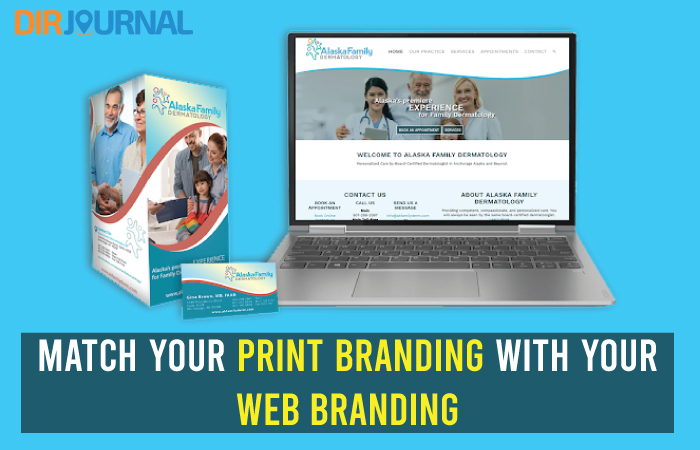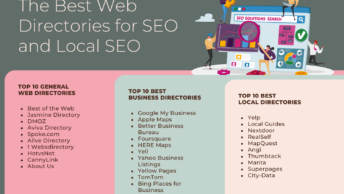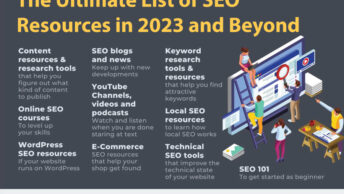Print Marketing has been around for centuries. These days most companies have some form of print marketing standard that is in place. It might be as simple as colors that match the overall theme of the company or it could be an extensive line of brochures to match every aspect of their business.
The web as a form of marketing has only been around for less than two decades. One of the biggest struggles within companies is the need to get their company website online and up to date. In a rush to “just get something up there” brands gets lost. Many companies forget to keep their brand consistent and wind up creating a second brand on the web. Having two brands can get very dangerous for a company.
Stay Consistent
If there is one piece of your branding that should never change, it is your logo. Your logo on your business cards should match the logo on your brochures which should match the logo on your website. Your logo is the face of your company and should never change on one marketing piece and not on another.
Keeping your brand for a long period of time is not a bad thing. If you have a company who has been in business for a while, your customers and potential customers probably have a good idea of your logo and other things associated with your brand.
Tag lines and catch phrases should remain consistent between print and web as well. If you are using a tag line in your print materials and completely leave it off of their website, customers might not be sure if it is the same company, especially if they’ve known your tag line for years. Not only are tag lines and catch phrases important, but it is also important to carry any images and colors from your print materials over to your website. This is something that customers identify as part of your brand. Knowing that they got a brochure that is blue and gray from you and showing up a website that is black and red could cause a lot of confusion.
Branding becomes incredibly important if you have a good number of long time customers. People don’t like change. If they go to your website to look up a phone number to give you a call and it looks completely different from anything your company has ever given them in paper form could throw them completely off.
For example: Hershey’s has maintained the same colors on their wrappers since the company started. What would you do if all of the labels were suddenly bright yellow and had a different font? You’d be confused, wouldn’t you?
Believe it or not, things as simple as address and phone number can cause confusion too. Advertising a local number in your brochures and an 800 number on your website could leave customers wondering which one they should call. Do they both go to the same place? If you have multiple offices make it clear throughout brochures and the website which office matches which address and phone number. Sometimes, the fewer options someone has the better.
If you do have multiple locations, create separate landing page websites for each of those locations and direct your customers to the specific location they should call. This will cut down on a lot of confusion
Unify Your Message
Chances are if you have print materials, someone has put a decent amount of time into writing the copy and designing the brochures. These brochures can be translated up to the website in the form of pdf downloads or can even be used as the main website content.
Not all of your customers will have the chance to meet you in person to get a copy of your brochure so it is important to make that accessible to them in more ways than just the printed copy. If you do decide to have separate copy for the website and your print materials, make sure it sends the same general message out.
For example: if your brochures feature employees and show off their dedication to your customers, translate that over to the website. Don’t ignore them all together when it comes to the website.
The same overall language should be used throughout both as well. If you use a lot of technical terms on your website to try and rank for specific keywords, but your brochures are light and easy to read. Customers will ignore your website completely and go directly to the brochures. Make sure each cover what you want your customers to read.
Keep Your Social Media at the Same Standard
Keeping your brand consistent online does not only apply to your website. If your company has taken the plunge into social media, make sure those accounts carry the theme over. If you’re using sites such as Facebook, Twitter etc, the background should be similar to that of your website’s background. Also, make sure to use your logo as your profile photo.
Going down the road of two separate brands is a dangerous one. If you have started going down that road stop immediately and rethink which one will benefit your company the most. In the long run it is better to have to rework either your print or your web up front instead of trying to maintain two separate brands.








In order to keep consistent colours you need to select pantones. Pantones are a universally agreed colour reference so your brand colours will appear the same whether printed on pens, mugs or coasters. Picking a pantone that has an equivalent web-safe colour means that your branding will be consistent across various media.
Another option is to decide upon a 1-colour version of your logo. By this I mean an all black/white/blue/etc version of the logo that is clarified in your brand guidelines. This means that you can purchase cheaper promotional items (as you only have to pay 1 colour print + setup).
Consistency is definitely key. Different themes, images, or even colors in different mediums will most likely cause a disconnect for your target audience. They may even wonder if it’s the same company. Therefore, it’s important that the brand has the same look and feel in all of the various media outlets.
.. isn’t it smarter to match your web with your print branding, cause your logo and buzzcards and other corporate identity stuff most probably is the first thing you design for a client? According to @Patrick, that means you have to look for nearby websafe variants for your PMS-colors.
It’s just a thought, and also the way I always work ..
It could go either way. A lot of companies begin with the web these days. I’ve worked with lots of clients who start with a website then move to business cards, etc…
Every company works different, it’s just important to make sure to keep your brands consistent whether its on business cards or your social media websites!
With the internet’s fast paced motion it is true that most small businesses that do not have the right resources to properly put their brand logos up and about the world wide web completely gets lost and this simple guidelines to help them stay on track will really be helpful.